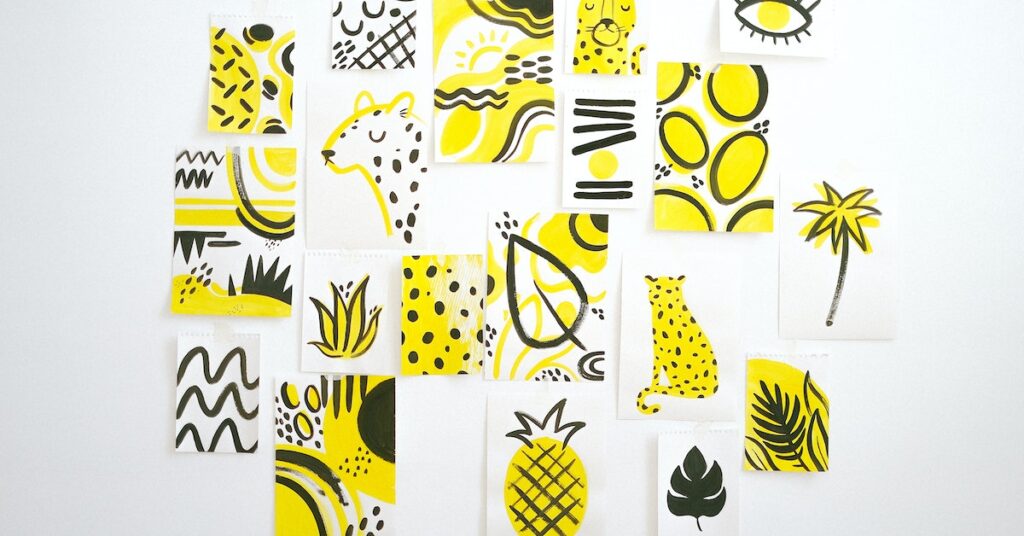Drawing can be a fun project, but it can also be intimidating. But if you are serious about learning, there are many benefits to learning to draw. These benefits can include reduced stress, increased self-esteem, and improved problem-solving abilities. Read on to learn more. If you don’t know where to begin, here are some tips.
Reduces stress
Drawing is a great way to release feelings that are causing you stress. You can practice this in a quiet place and set a timer. You can start by taking a few deep breaths before you sit down to start your art. You can practice mindfully drawing your thoughts, even if they are not of a masterpiece-it’s all about getting your feelings out on paper.
The joy of drawing is something that everyone feels. In fact, it has been shown in research studies to help reduce stress. In a study by Drexel University, researchers asked 39 adults to make art for 45 minutes and then measured their cortisol levels. The results were positive, and the study has been used in clinical settings as a stress management tool.
Practicing art has many health benefits. It can relax your brain, help relieve stress and help you focus. In addition, you can use your art as a visual diary. You can draw about anything, from a stressful situation to an idea or thought. Drawing can also help you forget about worries and other stressors in your life.
In addition to relaxing your mind, drawing exercises your eyes, hands, and mind. It encourages creativity and opens your mind to new thoughts. It also helps you improve your problem-solving skills. You can use your imagination to make sense of your situation and communicate your feelings with others more effectively.
Improves problem-solving skills
Drawing can help students develop higher-order thinking skills and be beneficial in a variety of learning tasks. For example, students can use their drawings to recall information and perform complex problem-solving tasks. Drawing can also help them develop mental models. These models can help them solve complex problems.
In biology, instructors frequently draw models to help students understand and solve problems. However, these lessons do not usually develop students’ drawing skills. There are some circumstances when drawing may be beneficial, such as when students need to use their visual memory for math, science, or social studies tasks. However, the benefits of drawing for learning are not obvious, and interventions that improve student skills may be necessary.
Drawing helps children develop creative problem-solving skills. This allows them to explore new ideas and connect different body parts. The process also helps them make decisions about what colors to use and how to draw. These are all skills that will help them as they grow older. In addition, drawing helps children learn how to manage their emotions and make decisions. These skills can help them in school and even in their career.
Children who enjoy drawing are likely to be more likely to be creative and more likely to succeed in school. This will encourage them to be more confident and improve their self-esteem. Drawing also promotes creative problem-solving because children have to connect body parts and depict emotions in their drawings. It also helps them improve their concentration, self-concept, and performance.
Increases self-esteem
Drawing has been proven to improve self-esteem in many ways. The act of drawing can help you feel better about yourself, and it can also help you to overcome shyness. Drawing can also improve your mood and increase your energy levels. It is a great way to express your feelings without being embarrassed or judged by others.
There are many different types of self-esteem exercises you can try. For example, you can draw pictures of things that have enriched your life. You can draw flowers, leaves, or even yourself. It is important to remember that these activities are very personal, so it’s important to protect your privacy.
Drawing is also a great way to improve your mindfulness. It requires you to pay close attention to your materials, and the process itself. This will help you deal with anxious thoughts and manage your heartbeat. If you find yourself in a stressful or anxious state, drawing can help you calm your heartbeat and stabilize your breathing.
Another self-esteem exercise involves writing positive artist statements or bios. Writing down positive statements about your work and your career will help you develop positive self-image. It will allow you to overcome the negative self-talk and boost your confidence.
Improves memory
Drawing is an effective way to boost memory. Researchers from the University of Waterloo conducted studies in both young and older adults to determine the effects of drawing on memory recall. They found that drawing enhanced memory more than passively looking at pictures or re-writing notes. The research involved young and older adults with varying levels of dementia, and included different methods of memory recall.
Drawing has been shown to improve memory retention because it uses a combination of visual, motor, and spatial skills. The University of Waterloo’s research involved tests of 24 undergraduates and 24 adults aged 65 or older. The subjects were asked to recall as many words as they could in two minutes. The older participants experienced a much higher degree of memory retention than younger people.
Drawing increases memory recall by more than 50%. The process requires students to think about the meaning of what they are trying to recall. They also have to translate the meaning of words and phrases into a different form. This is called active learning, which forces students to grapple with what they’re learning. The research team also found that drawing helped people remember more facts.
Another study by Yale University showed that drawing was highly effective in enhancing memory. In addition to improving memory, drawing may also have other benefits. It may help relieve stress and anxiety. A 2011 study also showed that students who participated in art projects had lower levels of anxiety. Similarly, mindfulness art therapy improved anxiety symptoms in patients with heart disease.
Improves hand-eye coordination
If you’re wondering how to improve hand-eye coordination, there are a number of different exercises that can help. One of the most important is a tennis ball drill. This drill requires all parts of your body to work together. If you are left-handed, for example, you will need to use your entire arm and foot to catch the ball and balance.
Hand-eye coordination is an intricate process and can mean the difference between an accident and a missed opportunity. If hand-eye coordination is impaired, it can lead to clumsiness and other problems at home and in the workplace. It can also affect your attention, handwriting, and typing skills. If you’re unsure of how to improve hand-eye coordination, you should consider seeking treatment.
Hand-eye coordination develops between five and eight months of age. A newborn doesn’t have any depth perception yet, but by five months, he or she is able to judge the distance between objects. The child also has good color vision and can distinguish between objects that are near or far.
Aside from physical exercise, hand-eye coordination can also be improved by using light panels. These panels reduce reaction times and improve hand-eye coordination. Moreover, optometrists use light panels to improve hand-eye coordination.
Enhances creativity
Drawing exercises are an excellent way to enhance creativity. These exercises can help develop your creativity and concentration, improve memory and even improve your stress levels. They also encourage open-ended thinking and critical thinking. These can all lead to new ideas and insights. Drawing can also help you develop your skills in problem-solving and personal development.
Drawing also sharpens perception. It allows you to see things in a new way and can be an effective way to communicate ideas. Drawing makes you aware of the fine details in a subject, and can reveal underlying structures. Developing these skills is an essential step in improving your work. Drawing also helps you relax and unplug from the daily demands of work and processing information.
One study looked at the relationship between artistic creativity and drawing skills. The study was conducted on students and was judged by a panel of visual artists. The study found that drawing skill was a significant predictor of artistic creativity. Even after controlling for other variables, drawing skill and artistic involvement remained highly correlated. Drawing skill was also associated with increased artistic involvement, particularly during young adulthood.
Drawing is an excellent way to stimulate your child’s creativity. Drawing is an easily portable form of art that you can do with your child any time of day. Schedule drawing time as a part of your child’s daily routine.








